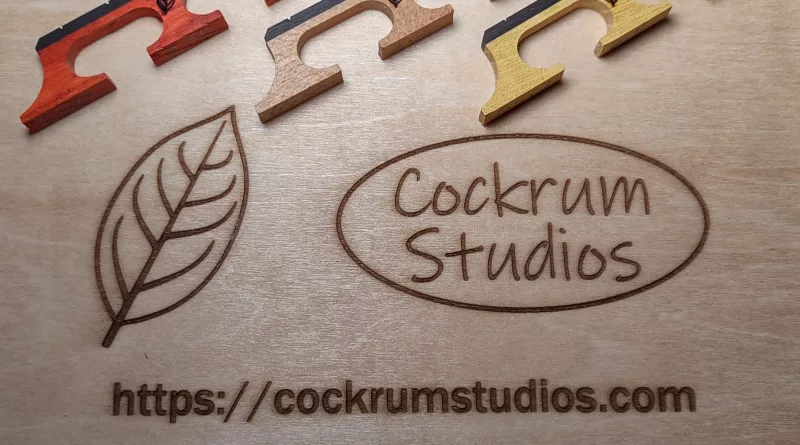Banjo Bridges from Alternative Materials
After reading some past posts and some discussion about bridge materials on Banjo Hangout, I decided to use my CNC router to make some banjo bridges from alternative materials. This means things other than just maple and ebony. Danny at Turtle Hill Banjo Company has agreed to help with the testing of these (he is a MUCH better player than I am) so I made these to his specs (.650″ tall + flat).

I started off making a bunch of bridge blanks from different materials. These include Padauk, Osage Orange, Walnut, Torrefied (Roasted) Maple, and one topped with a piece of bone per Danny’s request :). Specifically, the bridges above are: Torrefied Maple/Ebony, Osage Orange/Ebony, Black Walnut/Ebony, Padauk/Ebony, Hard Maple/Bone, Hard Maple/Ebony, Osage Orange, Black Walnut, Padauk, and Ebony (Gabon).


These were all made on my Shapeoko 5 Pro CNC router using exactly the same design so they are as identical as possible. There is a write-up on the process here. The only difference is that I decided to use a ball mill for the taper instead of the jig that I made. This was a suggestion from Scott (campandstrum on Banjo Hangout) and it definitely makes the bridges more consistent without taking too much time. I’m running about 12 minutes per bridge in total machining time right now but I could probably speed that up a lot by optimizing the toolpaths.
While I was waiting on the CNC to finish, I decided to make a case for the test bridges on the laser cutter. This is 1/8″ & 1/4″ birch plywood with magnets to hold it closed.

After each was complete, I laser marked each with my logo (a persimmon leaf) using my Omtech Polar 350.
I then weighed each one and penciled the height (.650″) and the weight of each on the bottom.

Here are videos of the testing.
There are two versions below. One with a Shure SM57 microphone and one with an AKC C3000 microphone
SHURE SM57 Version
AKG C3000 Version


I really like the note separation with the osage orange bridge
what is the difference of crowe spacing and standard? thank you, Nellie
Crowe is 1 3/4 inch measured center-to-center on the outer strings.
Standard is 1 11/16 inch